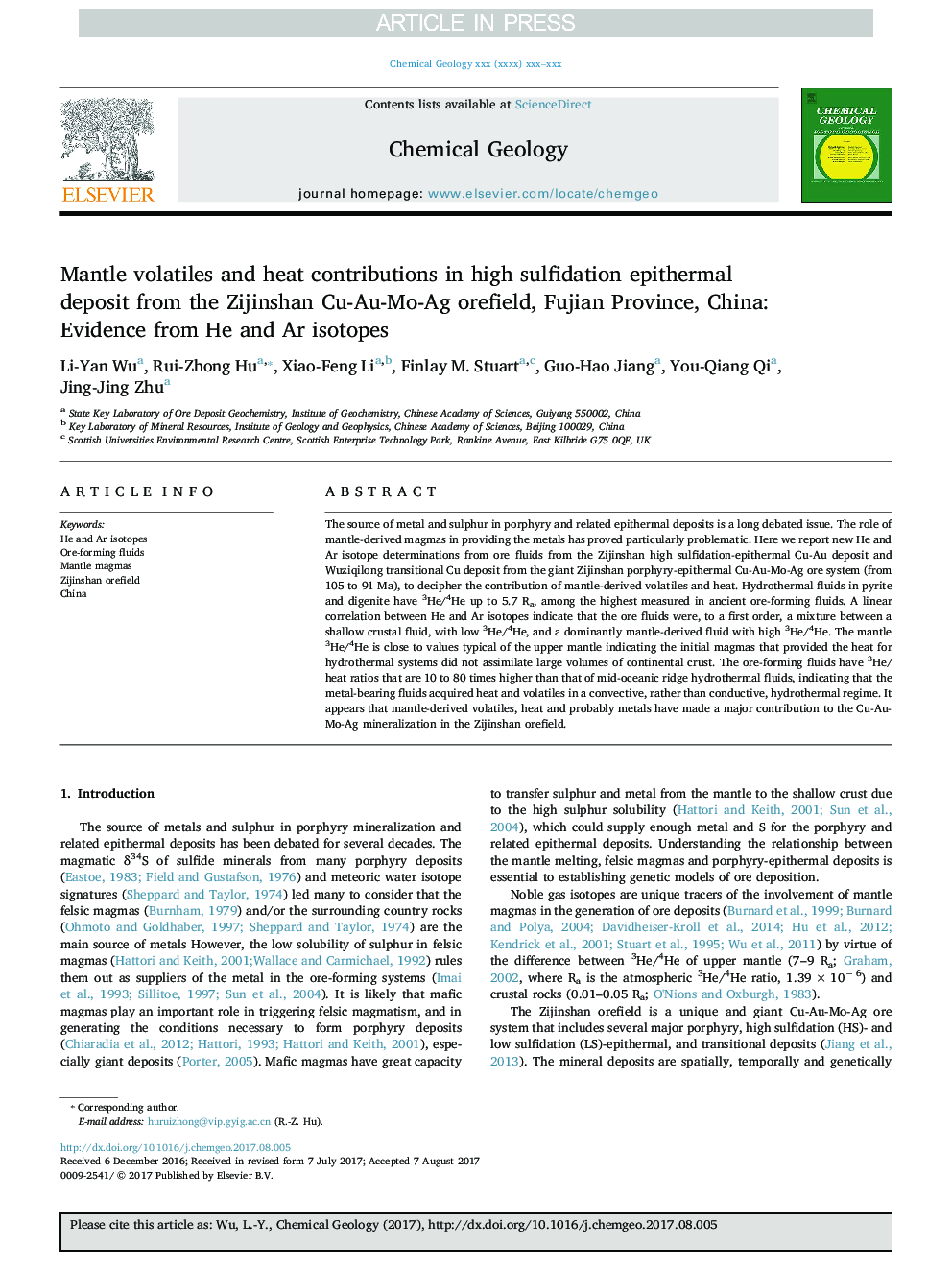| Article ID | Journal | Published Year | Pages | File Type |
|---|---|---|---|---|
| 8910356 | Chemical Geology | 2018 | 8 Pages |
Abstract
The source of metal and sulphur in porphyry and related epithermal deposits is a long debated issue. The role of mantle-derived magmas in providing the metals has proved particularly problematic. Here we report new He and Ar isotope determinations from ore fluids from the Zijinshan high sulfidation-epithermal Cu-Au deposit and Wuziqilong transitional Cu deposit from the giant Zijinshan porphyry-epithermal Cu-Au-Mo-Ag ore system (from 105 to 91Â Ma), to decipher the contribution of mantle-derived volatiles and heat. Hydrothermal fluids in pyrite and digenite have 3He/4He up to 5.7 Ra, among the highest measured in ancient ore-forming fluids. A linear correlation between He and Ar isotopes indicate that the ore fluids were, to a first order, a mixture between a shallow crustal fluid, with low 3He/4He, and a dominantly mantle-derived fluid with high 3He/4He. The mantle 3He/4He is close to values typical of the upper mantle indicating the initial magmas that provided the heat for hydrothermal systems did not assimilate large volumes of continental crust. The ore-forming fluids have 3He/heat ratios that are 10 to 80 times higher than that of mid-oceanic ridge hydrothermal fluids, indicating that the metal-bearing fluids acquired heat and volatiles in a convective, rather than conductive, hydrothermal regime. It appears that mantle-derived volatiles, heat and probably metals have made a major contribution to the Cu-Au-Mo-Ag mineralization in the Zijinshan orefield.
Related Topics
Physical Sciences and Engineering
Earth and Planetary Sciences
Geochemistry and Petrology
Authors
Li-Yan Wu, Rui-Zhong Hu, Xiao-Feng Li, Finlay M. Stuart, Guo-Hao Jiang, You-Qiang Qi, Jing-Jing Zhu,
